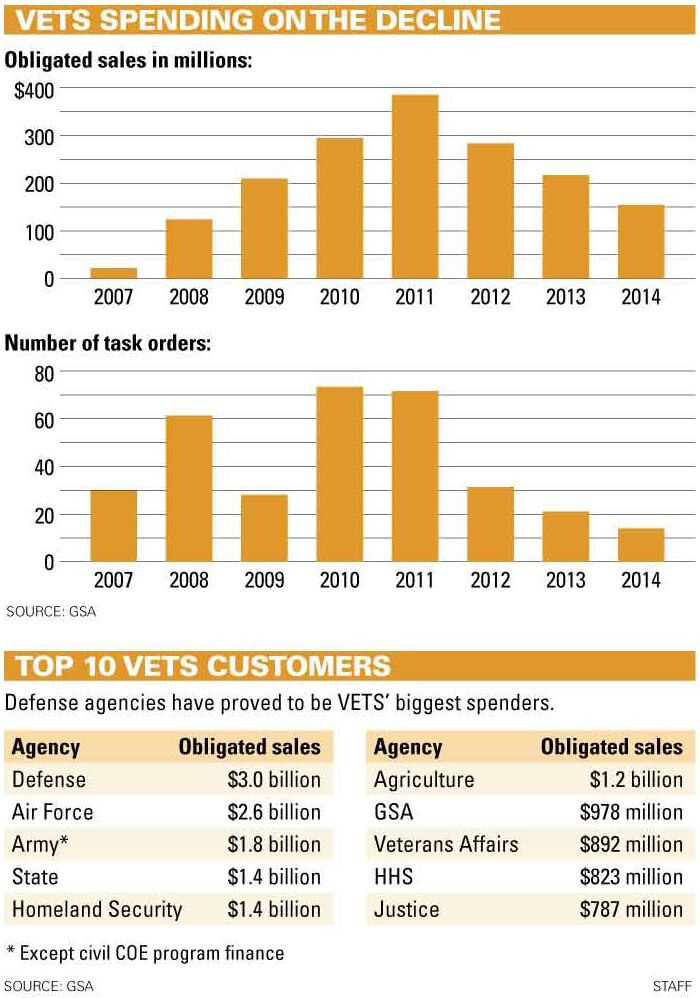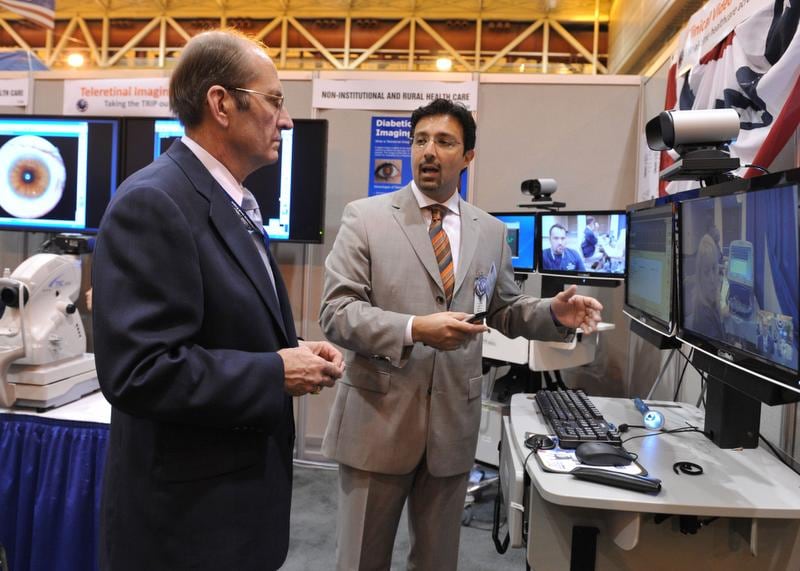Despite significant drops in spending on the Veterans Technology Services (VETS) contract, the General Services Administration lauds the program and is in the early stages of preparing to launch VETS II when the current vehicle period runs out in 2017.
GSA conducted a survey in November of stakeholders that have used VETS governmentwide acquisition contract (GWAC) to acquire IT services from service-disabled, veteran-owned small businesses and is combing through that data now before putting together an early framework for the second generation.
The next step will be a sources-sought solicitation, expected in March 2015, according to GWAC Director Chris Fornecker.
The VETS GWAC launched in February 2007 with a $5 billion ceiling and a five-year run. The five-year optional add-on was initiated in 2012, giving the vehicle an end date of Feb. 1, 2017. All orders placed through VETS should be wrapped up by February 2020.
Federal agencies have used the GWAC to purchase IT products and services ranging from upgrades to the Veteran Affairs wireless network; helping the Treasury Department move a data center to a new location; creating a 24-hour help desk for the Air Force's Air Combat Command Advanced Computer Flight Plan; and building the Next Generation Radar network to support the National Weather Service, Federal Aviation Administration and Air Force.
Sales on VETS dropped from a high of $386 million in 2011 to $156 million in 2014 — just above 2008 levels. During that same period, other GWACs showed slow growth but only VETS and Streamlined Technology Acquisition Resources for Services (STARS) showed a year-over-year decline. STARS II replaced the latter in 2011, accounting for the decrease.
Because of its narrow scope — dealing with only small businesses owned by veterans — it's difficult to compare VETS with other set-aside vehicles offered by GSA and other agencies in a like-for-like manner.

However, Fornecker pointed to the billions of dollars obligated through the contracts and Steve Triplett, small business director at the GWAC Center, noted the effect this has had on veteran-owned small businesses — nine of which graduated out of the small business category as a direct result of sales on VETS.
"If you look at the number of companies that were able to outgrow the small business size standard as a result of being on this contract," Triplett said. "I believe it was successful, it is successful, and it will be even more successful in the future."
Despite successes, sales on VETS fell heavily starting in 2012, partially due to its age but largely as a result of Veterans Affairs moving its IT contracts to its own vehicle.
Purchases through the VA constitute 39 percent of all dollars contracted on VETS. The drop in sales coincides with the rise of VA's Transformation Twenty-One Total Technology (T4) awards, which opened in June 2011.
"Usage [of T4] really picked up in fiscal 2012, with just over 70 tasks awarded to SDVOSB [service-disabled, veteran-owned small business] primes for a total combined value of $1.5 billion, followed by 80 tasks awarded to SDVOSB primes in fiscal 2013 for a combined value of $379 million," said Jennifer Sakole, principal analyst for Federal Information Solutions at Deltek.
In 2012, total spending on VETS contracts dropped by almost 27 percent, a trend that has continued through 2013 and 2014.
Sakole noted total VA spending on VETS was at its highest in 2010 but fell to only 10 percent of that total by 2012.
"The peak was in fiscal 2010, with 60 tasks awarded [by VA on VETS] for a combined total value of $283 million," she said. "Compare this to the VA's fiscal 2012 activity on VETS, when there were less than 20 tasks awarded for a total value of $28 million."
"When they started T4 we took a big hit," Triplett said. "Instead of all the opportunities being awarded on a single contract — making it easier to see the total business volume across the federal market — it's been broken up into smaller chunks throughout multiple organizations."
Though the program has lost its largest customer, VETS — and eventually VETS II — still has an important place among GSA's suite of offerings.
"This is the only GWAC that's set aside for service-disabled veteran-owned small businesses, there are no others that are built this way," Fornecker said. "Having the vehicle makes it easier for agencies to meet their own goals ... Having this particular contract that is dedicated to supporting this class of socio-economic category, I think it is something that is attractive to our customers."
In an effort to make access to VETS II easier, GSA plans to set up an Interact website, similar to the one used for Alliant II and Alliant II Small Business. The GWAC managers also plan to follow the model used in promotion of the OASIS program.
"We're doing a better job of getting stakeholder involvement early in the development of the follow-on vehicle," Triplett said. "They will have more ownership in this vehicle because it's something they've helped to build."
Aaron Boyd is an awarding-winning journalist currently serving as editor of Federal Times — a Washington, D.C. institution covering federal workforce and contracting for more than 50 years — and Fifth Domain — a news and information hub focused on cybersecurity and cyberwar from a civilian, military and international perspective.





